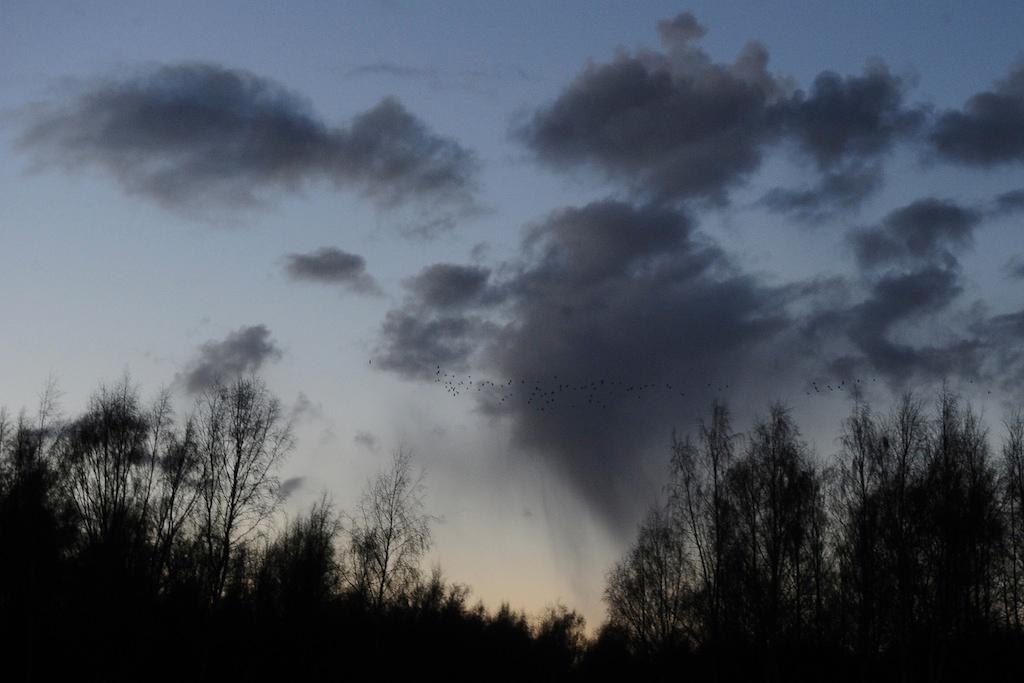Scientists invent ‘living crystals’ to study collective behaviors (VIDEO)
A flock of birds fly past a dark grey cloud near Vaasa, Iceland, on April 16, 2010.
To help them study self-organizing collective behaviors, scientists at New York University have created synthetic particles that form ‘living crystals’ in certain chemical conditions, Wired reported.
The scientists are interested in learning more about the ways schooling fish, flocking birds and even swarming humans respond to the environment in ways that individual animals would not, the New Scientist reported.
According to R&D Magazine:
The work addresses a fundamental question in nature—what causes flocks and swarms to form and move in a particular way?
The particles are microscopic cubes of hematite covered in a spherical polymer coat, Wired reported. They are suspended in a fluid and activated by blue light, R&D Magazine reported.
The particles form crystals that are lifelike in that they possess metabolism and mobility, NYU physicist Paul Chaikin, who helped develop the particles, said, according to Wired.
"In future it may be possible to create systems of particles that can make collective decisions – something we often think of as only possible in biological systems," Iain Couzin, a Princeton University-based scientist who’s studied swarming in fish, told the New Scientist.
We want to hear your feedback so we can keep improving our website, theworld.org. Please fill out this quick survey and let us know your thoughts (your answers will be anonymous). Thanks for your time!
